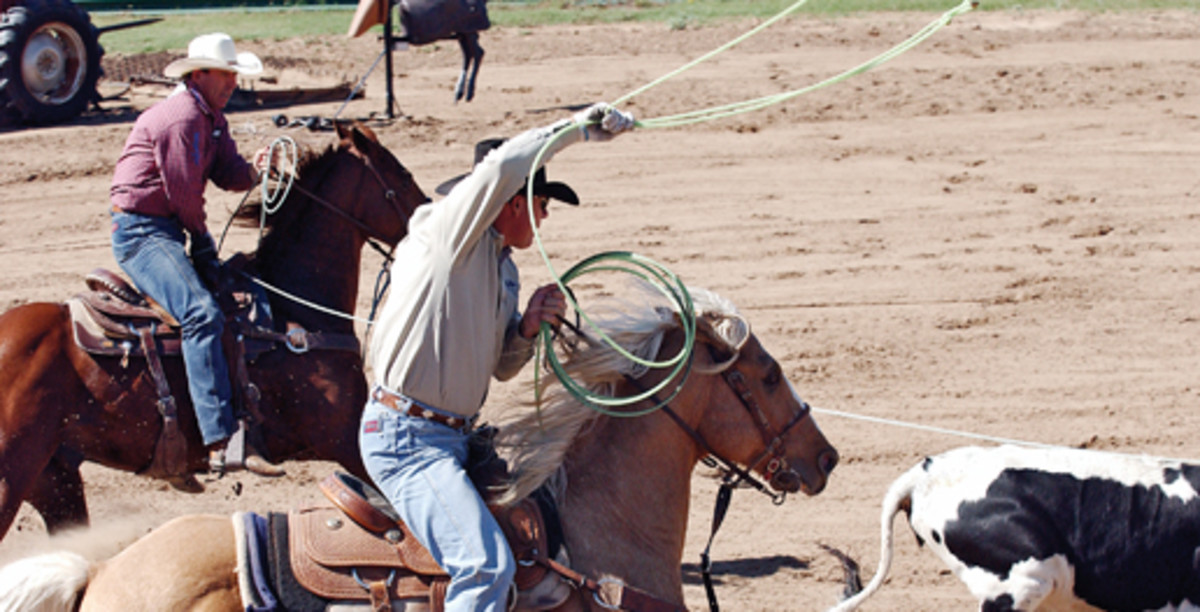I’ve observed a lot of people and their approach to roping over the years, and there are two ends of the spectrum and everything in-between. I’ve always been on the end where I analyze every aspect inside and out, and I’ve seen other guys on the same end that are really meticulous in how they break it all down. Other people keep it so simple. They’ve found something that works for them, and that’s what they do. I think there needs to be a balance. I think I sometimes break it down too much and think about things too much, so I admire the guys who are pretty simple in their approach. They aren’t cluttered with too much thinking about all the intricate parts.
I watch golf and listen to golf commentators, because there are so many parts to golf just like roping. I listen to them talk about each golfer, and they say some of them have easy, simple, basic fundamentals. Other guys break down their swing into so many different parts, and have multiple teachers and coaches for the various areas of their game. I think we should all strive for a balance somewhere in the middle. A person wants to understand what makes things work, but not go so far overboard that you can’t just perform the function easily.

We have to allow ourselves to react. I’ve found there are times when I’m confident and roping good, and I don’t really think about it all that much because I have the confidence that it’s easy to do. There are other times when I lack confidence in what I’m doing, so I really try to break it down to find the answer. But trying to break down every little part of a run can take away my ability to trust my reaction.

I’ve done roping schools for 25 years, and I see the type of people who come to the school who overdo it when breaking things down. I also see the ropers who have just a real basic, simple approach. Even at the lower-numbered level, how you approach this topic really affects you. The right kind of practice will produce the ability to train yourself to react correctly. If you try to think about too many things in a run, it takes away your ability to perform.

I’ve always said that in my run I look at the whole picture. I take in what my eyes are focused on, but also watch my header, the steer and the whole arena out in front of me in one big picture, so I can react to everything that’s going on. Looking at the big picture allows you to see things and process them. Seeing runs like that starts to produce reaction. Isolating your concentration on just one part-if you’re only looking at the steer’s right leg, for example-takes away your ability to see all that’s going on. Is that steer running straight or slowing up, does my header have him on a long or short rope-whatever. By looking at the big picture, I can also adjust or compensate for little things like a tie down malfunction.

If a person gets too overboard in trying to do things from point to point-thinking you need to turn in at a certain spot, that your timing has to be just so, and thinking about where you’re going to place your top strand, for example-you lose something. When you just go from segment to segment in a run, you take away the flow of the run. Relaxing and letting yourself react is more productive, especially when you get to the roping, because that’s when the pressure’s on.

One of the most commonly asked questions at a roping school is how I learned to rope short-round steers like I do the first ones. When the pressure’s on, your winners are usually the happy-go-lucky, relaxed types who don’t think about it a lot. They win a lot easier, because they just relax and go rope. The people who are mulling it over in their minds and worrying about whether or not they’re going to catch have a lot more trouble. You need to just back in there and let it happen.

What it all comes down to is you can work on the different aspects of roping when you practice, ride your horse and rope the dummy. But when it comes to winning, the mental game is the main thing. That’s where we have to make sure we’re balanced in our approach and our way of thinking about it, and learn to relax and keep ourselves in a good, easy flow. We don’t want to be too cautious or reckless, but to have a good balance and trust our abilities. That keeps it more fun, too. It keeps the worry and the tightness out of it. People perform a lot better when we’re not all tight and locked up. STW










